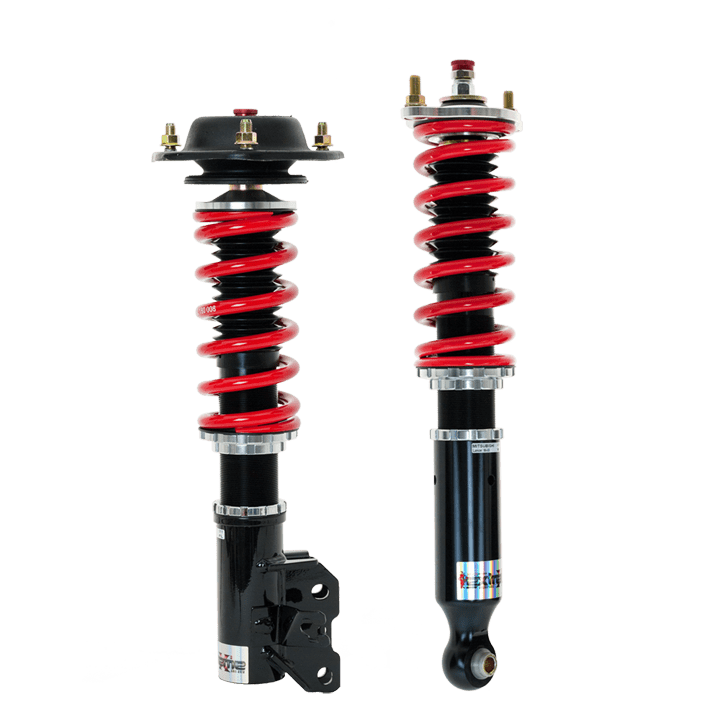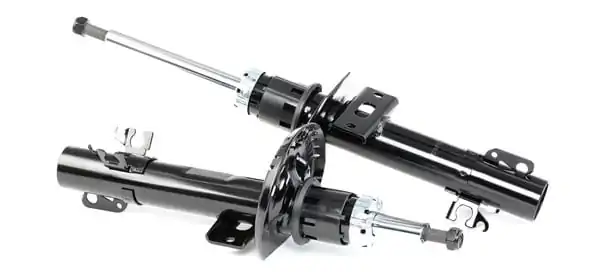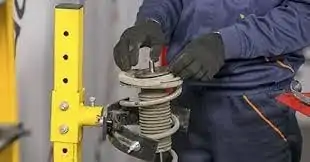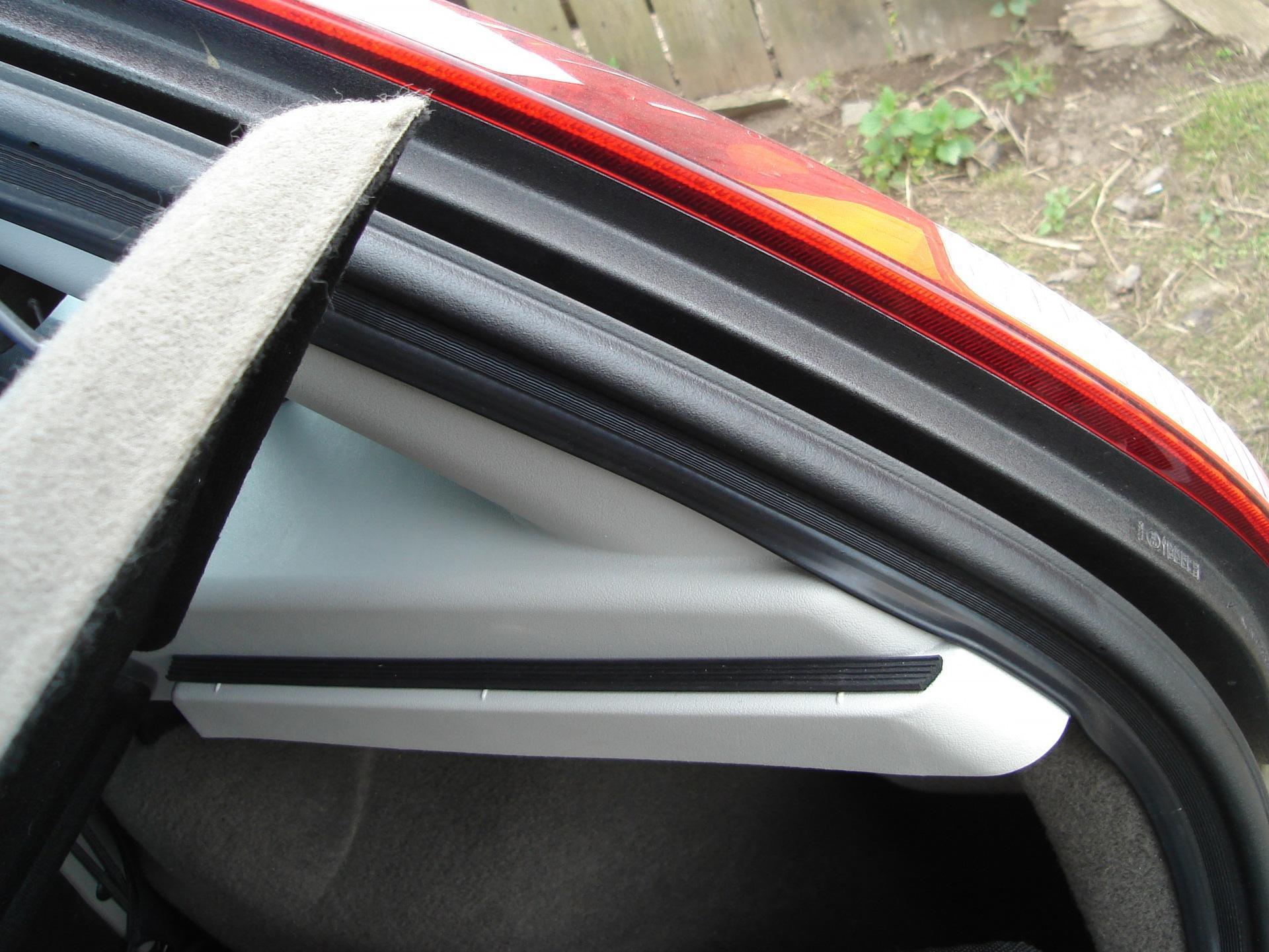
How do front and rear shock absorbers work and how to replace them?
Content
- So it was at the beginning of the automotive industry, and today ...
- How do front and rear shock absorbers work and how do they differ?
- What is the difference between front and rear shock absorbers?
- How often should shock absorbers be checked and replaced?
- How to change the front and rear shock absorbers?
- Front shock absorber replacement
- Replacing Rear Shock Absorber
- MacPherson strut replacement
- Do not forget!
- Questions and answers:
Immediately after the appearance of the first car, designers were faced with the question of how to minimize the vibration of the car body during its movement and especially when passing roughnesses.
Fortunately, they were able to quickly find a solution, and today all of us, car drivers, can enjoy a smooth and comfortable journey, regardless of whether we are moving along a flat highway like a mirror, or along dirt and rough roads.
The solution to the problems of automotive designers and manufacturers is the introduction of shock absorbers, which, as soon as they were invented, occupied a central and very important place in the car's suspension.
So it was at the beginning of the automotive industry, and today ...
What is the function of shock absorbers?
The main function of the shock absorbers is to reduce the vibration of the car and maintain constant contact of the wheels of the car with the road in order to avoid loss of control over the car.
Here's how it works. When the car moves and collides with bumps on the road, the wheel comes off the road surface, overcoming the resistance of the suspension springs. If the irregularities are large, the car body rises with the wheel, after which it again lowers onto the road due to gravity and energy of the compressed suspension spring.
However, all this exercise to raise and lower the wheels and the car body can last several seconds, during which the driver loses control. In order not to get into this situation, shock absorbers are installed on the cars to counter these vibrations. The design of the shock absorbers is such that the higher the degree of vibration (vibration), the greater the resistance.
How do front and rear shock absorbers work and how do they differ?
The easiest way to explain the device and the operation of these suspension elements, saying that the shock absorber, roughly speaking, is an oil pump. This pump is located between the wheels and the car body. The upper part of the shock absorber is connected to a piston rod, which is connected to a piston, which is located in a pipe filled with hydraulic fluid. The inner pipe serves as a pressure chamber, and the outer pipe serves as a reservoir for excess hydraulic fluid.
When the wheels of a car collide with irregularities, they transfer energy to the springs, which in turn transfer this energy to the top of the piston rod and down to the piston. Small holes are located on the surface of the piston, which allows hydraulic fluid to flow with each movement of the piston. These holes are very small and very little hydraulic fluid passes through them, but this is enough to slow down the overall movement of the piston.
As a result, the vibrations that occur during the movement of the car are “leveled”, reduced, and the car moves smoothly and ensures the stability of the vehicle and the comfort of passengers in it.
In addition, all types of shock absorbers are sensitive to speed, which allows them to easily adapt to road conditions and helps to control any unnecessary or unwanted movements that may occur in a moving car.

What is the difference between front and rear shock absorbers?
Every modern car is equipped with two front and two rear shock absorbers. Both front and rear, they perform the same task, but vary slightly in size and performance, as well as in service life. The front shock absorbers have a shorter service life than the rear, and this is due to the fact that in most modern cars the engine is located in the front, which means that the load and vibration in the front of the car exceed the load at the rear of the car. To extend the life of the front shock absorbers, more and more car manufacturers are using MacPherson front shock absorbers, in which the spring and shock absorber are combined into one working component.
There is still a lot to be said on this subject, but we believe that it has become a little clearer what shock absorbers are and how they work, and it's time to move on, namely, to see how these suspension elements are so important to the car.
Before that, however, let's find out when they change, and what are the main symptoms indicating that it is time to change the front and rear shock absorbers.
How often should shock absorbers be checked and replaced?
The good news is that modern shock absorbers have a fairly long life, often exceeding even 100 km. before the first signs of wear and tear. However, to make sure your shock absorbers work well, we recommend checking them on average every 000 km, and if you have traveled more than 20 km. without any hesitation, it is mono to go to replace them, because after this mileage they lose their effectiveness and properties.
Shock absorbers must also be replaced if:
- fluid flows from it
- if you notice corrosion on the shock absorber supports
- if you notice corrosion on the piston rod (corrosion on the piston rod can lead to damage or leakage of the working fluid);
- if there is deformation on the shock absorber body. (If it is deformed, this can lead to blocking or slowdown of its movement);
- if you feel that the car is less stable in corners or you hear a knock

How to change the front and rear shock absorbers?
Before thinking about replacing shock absorbers yourself, you should know the following: When such a replacement is necessary, you must replace either all shock absorbers or in pairs (two front or two rear shock absorbers). Never replace just one shock absorber! We repeat: if you change, change in pairs!
Be very careful when choosing and buying shock absorbers. Carefully read in the booklet with the car device what type of shock absorber is suitable for your make and model of car. Make sure you buy the right front and rear shock absorbers!
One last thing... Replacing these suspension components is not easy at all, and unless you are completely confident that you can replace the shock absorbers yourself, it is best not to try. We advise you, completely unselfishly, instead of trying and making mistakes, go to your mechanic and leave him with a replacement.
The replacement process itself is complex, and if you trust the service center, they will perform all the necessary tests and follow-up procedures to ensure that the replacement is successfully completed and your shock absorbers will perform effectively until the next shift.
If you still think you can handle it yourself, here's how the front and rear shock absorbers work and how they change.
First you need the necessary tools: a set of wrenches, a set of screwdrivers, a tool for disassembling the suspension springs, a jack and stand, safety glasses and gloves.

Front shock absorber replacement
- Place the machine on a level surface.
- First jack the front part, and then install the supports to secure the vehicle securely.
- Using a wrench, loosen the wheel bolts and remove them.
- Find the two bolts that secure the steering wheel and remove them.
- Remove a hose from brake system, turn off nuts of fastening of the top part of the shock-absorber.
- Release the spring support
- Unscrew the center nut of the shock absorber and remove it.
- Remove the spring. (For this step, you will need a special device to remove it)
- Before installing new shock absorbers, it is necessary to pump them manually at least several times (up to 5).
- Replace the spring and all other parts on the shock absorber and tighten all nuts
- Install the new shock absorber following the instructions in the reverse order.
Replacing Rear Shock Absorber
- Lift the rear of the car to make you comfortable
- Turn off the wheel bolts and remove them
- Turn off a bolt of fastening of the bottom part of the shock-absorber to an axis, pull the plug in which it is located. Remove the shock absorber by unscrewing the nut securing it to the body.
- Using a special device, unscrew and remove the spring
- Before installing new shock absorbers, pump them several times manually
- Place the spring and all other elements on the shock absorber (bellows, pillow, etc.)
- Install in the reverse order of removal.
MacPherson strut replacement
- Raise the vehicle to a comfortable working height.
- Remove the wheel by unscrewing the nuts and remove it
- Disconnect the shock absorber from the shank and unscrew the upper part of the shock absorber
- Remove Caliper
- Remove the top pad along with the pillow and bearing
- Install the new shock absorber in the reverse order.
Do not forget!
Even if you only need to replace one of your shock absorbers, it's worth changing a pair. Although you can only change the shock absorber, it would be good to change everything else - hose, pads, etc.
After replacing the shock absorbers, it is necessary to adjust the wheels of the car to make sure that you have made the correct replacement, and the shock absorbers will work for at least another 50 km. fully effective.
These are the main steps when replacing the front and rear shock absorbers, and as you can see, this task requires a little more in-depth knowledge. Therefore, if you are not a pro, do not try to do it yourself, because you can seriously damage both your car and jeopardize your own safety.
Questions and answers:
How Does Car Shock Absorbers Work? It performs a reciprocating motion when the car hits an obstacle. The piston forces the oil through the bypass valve into the other chamber of the cylinder. The spring returns it and the oil to their original position.
How to check the operation of shock absorbers? The machine swings vertically and releases. A serviceable shock absorber will not allow the body to swing more than once.
ДWhy do you need a shock absorber in a car? This is a suspension element that, firstly, softens the impact when hitting an obstacle. Secondly, it does not allow the body to wobble. Otherwise, the wheels would constantly lose traction.
How do you know when it's time to change shock absorbers? Due to faulty shock absorbers, the car body sways heavily. Roll increases during cornering. Acceleration and braking are accompanied by strong body tilts.

